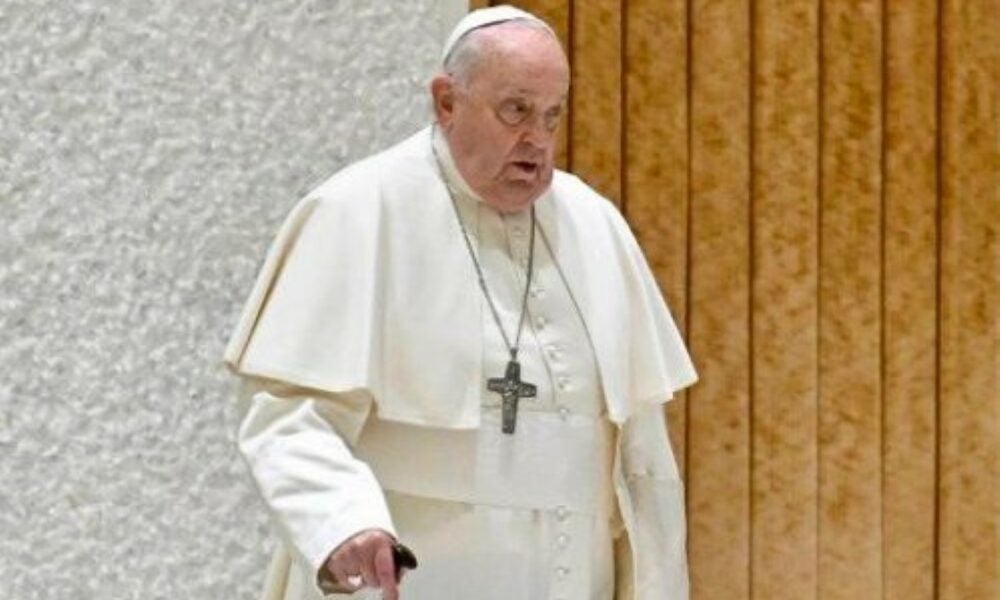Pope Francis, aged 88, has entered his fifth day of hospitalization at the Agostino Gemelli Polyclinic in Rome, where he is undergoing treatment for a polymicrobial infection affecting his respiratory tract. The Vatican described his clinical condition as complex, which prompted changes in the prescribed therapy. Consequently, all official engagements scheduled for the week and the weekend have been canceled, including the general audience on Wednesday, February 19, 2025, and the Mass for the Jubilee of Deacons, planned for Sunday, February 23. Medical staff have not provided an estimated date for the pope’s discharge, emphasizing the need for ongoing observation and complete rest.
Medical updates from the Holy See indicated that Francis is fever-free, stable, and responding positively to treatment. On Tuesday morning, February 18, the pontiff received the Eucharist, had breakfast, and spent time reading and engaging in light work activities. However, despite the positive reports, the diagnosis of a polymicrobial infection requires heightened vigilance, as it involves a combination of bacterial, viral, and possibly fungal pathogens, complicating both diagnosis and treatment.
Messages of solidarity and prayers for the pope’s recovery continue to pour in from faithful followers and religious figures worldwide. Francis, visibly moved by the outpouring of affection, publicly expressed his gratitude, particularly to fellow patients at the hospital, who sent letters and drawings with wishes for his speedy recovery. Even while hospitalized, the pope maintained pastoral contact, including phone calls with members of a Catholic parish in Gaza.
Pope Francis’s respiratory history and recent health deterioration
Respiratory issues have been a recurring challenge for Pope Francis throughout his life. At the age of 21, he underwent a partial lung removal following a severe bout of pneumonia and the discovery of cysts. Since then, his reduced lung capacity has made him more susceptible to respiratory infections and persistent colds.
In early February 2025, the pope informed attendees at a general audience that he was suffering from a severe cold. Days later, the Vatican clarified that the condition had evolved into bronchitis. The illness visibly affected him during public appearances, leading to fatigue and breathing difficulties. On both February 9 and February 12, he had to request assistance from an aide to complete his speeches.
After several days of home treatment, Francis’s condition worsened, leading to his admission to Gemelli Hospital on Friday, February 14, for more thorough medical examinations. Subsequent tests identified a polymicrobial infection in his respiratory tract, necessitating changes to his medication and the suspension of all upcoming engagements, including the traditional Sunday Angelus prayer and a special Mass involving artists celebrating the Catholic Church’s Jubilee Year.
Polymicrobial infection: understanding the condition and its dangers
A polymicrobial infection is defined by the presence of multiple pathogens—such as bacteria, viruses, and fungi—attacking the body simultaneously. This condition becomes especially concerning when it affects the respiratory system of elderly individuals, such as Pope Francis, who already has a history of lung-related issues.
Key risks associated with polymicrobial infections:
- Potential development into severe pneumonia or respiratory failure.
- Requirement for combined treatments involving antibiotics, antivirals, and antifungal medications.
- Difficulty in identifying all pathogens, leading to extended diagnostic processes.
- Increased likelihood of antibiotic resistance if treatment is ineffective.
Typical approaches to treating this condition include:
- Regular laboratory tests to monitor the infection’s progress.
- Simultaneous use of antibiotics, antivirals, and antifungal medications.
- Respiratory support therapy if oxygen levels become compromised.
- Nutritional support and proper hydration to strengthen the patient’s immune system.
While the absence of fever in Pope Francis is regarded as a positive indicator, his advanced age and prior lung surgery require careful attention and continuous monitoring.
Previous health concerns and hospitalizations
Throughout his papacy, which began in 2013, Pope Francis has faced several health challenges that required medical intervention. Some of the most notable instances include:
- Partial removal of his right lung at the age of 21 due to severe pneumonia.
- Intestinal surgery in 2021 to address diverticular stenosis.
- Hernia surgery in 2023 requiring prolonged recovery.
- Multiple hospitalizations in 2023 due to bronchitis, treated with intravenous antibiotics.
Additionally, Pope Francis suffered two falls in recent months—one in December 2024 and another in January 2025—resulting in minor injuries to his chin and arm. These incidents raised concerns about his physical stability. As a result, he increasingly relies on a cane and occasionally uses a wheelchair.
Cancellations and impact on Jubilee 2025 events
The Vatican’s decision to cancel and reschedule key events underscored the gravity of the pope’s health concerns. These adjustments were made to prioritize his recovery and prevent any complications from his ongoing infection.
Significant canceled or altered engagements include:
- General audience scheduled for Wednesday, February 19.
- Jubilee of Deacons Mass on Sunday, February 23, now to be led by Cardinal Rino Fisichella.
- Visit to Cinecittà film studios, planned for Monday, February 17.
- Sunday Angelus prayer at St. Peter’s Square, suspended on February 16.
These changes come amid the Jubilee of 2025, which began on December 24, 2024, with the Opening of the Holy Door at St. Peter’s Basilica. The event is expected to draw approximately 35 million pilgrims to Rome over the year.
Global support and pastoral outreach
Concerns over Pope Francis’s health have resonated across the global Catholic community and beyond. Supporters gathered outside Gemelli Hospital, lighting candles and leaving flowers as symbols of hope and solidarity.
Even from his hospital bed, the pope continued his pastoral duties by making phone calls to a Catholic parish in Gaza, reaffirming his commitment to supporting communities in conflict zones. This outreach underscored his reputation as a pope dedicated to peace and humanitarian efforts.
Key data and timeline of recent health developments
- Age: 88.
- Diagnosis: Polymicrobial respiratory tract infection.
- Hospital: Agostino Gemelli Polyclinic, Rome.
- Current condition: Stable and fever-free.
Recent timeline of events:
- February 5: Pope reports cold symptoms during a public audience.
- February 9: Experiences breathing difficulties during Mass; an aide assists with speech.
- February 12: Again requires help during a public address.
- February 14: Admitted to Gemelli Hospital for treatment.
- February 17: Diagnosis confirmed as polymicrobial infection.
- February 18: Weekend schedule officially canceled.
Facts and notable details about Pope Francis
- First Jesuit and Latin American pope in history.
- Known for choosing to live at Casa Santa Marta instead of the Apostolic Palace.
- Advocates for the poor and champions social justice.
- Maintains regular contact with communities in war-affected regions.
Statistical information and figures
- Global Catholic population: Approximately 1.3 billion.
- Estimated 35 million visitors expected in Rome for the Jubilee 2025.
- Over 400,000 priests and 5,600 bishops serving worldwide.

Pope Francis, aged 88, has entered his fifth day of hospitalization at the Agostino Gemelli Polyclinic in Rome, where he is undergoing treatment for a polymicrobial infection affecting his respiratory tract. The Vatican described his clinical condition as complex, which prompted changes in the prescribed therapy. Consequently, all official engagements scheduled for the week and the weekend have been canceled, including the general audience on Wednesday, February 19, 2025, and the Mass for the Jubilee of Deacons, planned for Sunday, February 23. Medical staff have not provided an estimated date for the pope’s discharge, emphasizing the need for ongoing observation and complete rest.
Medical updates from the Holy See indicated that Francis is fever-free, stable, and responding positively to treatment. On Tuesday morning, February 18, the pontiff received the Eucharist, had breakfast, and spent time reading and engaging in light work activities. However, despite the positive reports, the diagnosis of a polymicrobial infection requires heightened vigilance, as it involves a combination of bacterial, viral, and possibly fungal pathogens, complicating both diagnosis and treatment.
Messages of solidarity and prayers for the pope’s recovery continue to pour in from faithful followers and religious figures worldwide. Francis, visibly moved by the outpouring of affection, publicly expressed his gratitude, particularly to fellow patients at the hospital, who sent letters and drawings with wishes for his speedy recovery. Even while hospitalized, the pope maintained pastoral contact, including phone calls with members of a Catholic parish in Gaza.
Pope Francis’s respiratory history and recent health deterioration
Respiratory issues have been a recurring challenge for Pope Francis throughout his life. At the age of 21, he underwent a partial lung removal following a severe bout of pneumonia and the discovery of cysts. Since then, his reduced lung capacity has made him more susceptible to respiratory infections and persistent colds.
In early February 2025, the pope informed attendees at a general audience that he was suffering from a severe cold. Days later, the Vatican clarified that the condition had evolved into bronchitis. The illness visibly affected him during public appearances, leading to fatigue and breathing difficulties. On both February 9 and February 12, he had to request assistance from an aide to complete his speeches.
After several days of home treatment, Francis’s condition worsened, leading to his admission to Gemelli Hospital on Friday, February 14, for more thorough medical examinations. Subsequent tests identified a polymicrobial infection in his respiratory tract, necessitating changes to his medication and the suspension of all upcoming engagements, including the traditional Sunday Angelus prayer and a special Mass involving artists celebrating the Catholic Church’s Jubilee Year.
Polymicrobial infection: understanding the condition and its dangers
A polymicrobial infection is defined by the presence of multiple pathogens—such as bacteria, viruses, and fungi—attacking the body simultaneously. This condition becomes especially concerning when it affects the respiratory system of elderly individuals, such as Pope Francis, who already has a history of lung-related issues.
Key risks associated with polymicrobial infections:
- Potential development into severe pneumonia or respiratory failure.
- Requirement for combined treatments involving antibiotics, antivirals, and antifungal medications.
- Difficulty in identifying all pathogens, leading to extended diagnostic processes.
- Increased likelihood of antibiotic resistance if treatment is ineffective.
Typical approaches to treating this condition include:
- Regular laboratory tests to monitor the infection’s progress.
- Simultaneous use of antibiotics, antivirals, and antifungal medications.
- Respiratory support therapy if oxygen levels become compromised.
- Nutritional support and proper hydration to strengthen the patient’s immune system.
While the absence of fever in Pope Francis is regarded as a positive indicator, his advanced age and prior lung surgery require careful attention and continuous monitoring.
Previous health concerns and hospitalizations
Throughout his papacy, which began in 2013, Pope Francis has faced several health challenges that required medical intervention. Some of the most notable instances include:
- Partial removal of his right lung at the age of 21 due to severe pneumonia.
- Intestinal surgery in 2021 to address diverticular stenosis.
- Hernia surgery in 2023 requiring prolonged recovery.
- Multiple hospitalizations in 2023 due to bronchitis, treated with intravenous antibiotics.
Additionally, Pope Francis suffered two falls in recent months—one in December 2024 and another in January 2025—resulting in minor injuries to his chin and arm. These incidents raised concerns about his physical stability. As a result, he increasingly relies on a cane and occasionally uses a wheelchair.
Cancellations and impact on Jubilee 2025 events
The Vatican’s decision to cancel and reschedule key events underscored the gravity of the pope’s health concerns. These adjustments were made to prioritize his recovery and prevent any complications from his ongoing infection.
Significant canceled or altered engagements include:
- General audience scheduled for Wednesday, February 19.
- Jubilee of Deacons Mass on Sunday, February 23, now to be led by Cardinal Rino Fisichella.
- Visit to Cinecittà film studios, planned for Monday, February 17.
- Sunday Angelus prayer at St. Peter’s Square, suspended on February 16.
These changes come amid the Jubilee of 2025, which began on December 24, 2024, with the Opening of the Holy Door at St. Peter’s Basilica. The event is expected to draw approximately 35 million pilgrims to Rome over the year.
Global support and pastoral outreach
Concerns over Pope Francis’s health have resonated across the global Catholic community and beyond. Supporters gathered outside Gemelli Hospital, lighting candles and leaving flowers as symbols of hope and solidarity.
Even from his hospital bed, the pope continued his pastoral duties by making phone calls to a Catholic parish in Gaza, reaffirming his commitment to supporting communities in conflict zones. This outreach underscored his reputation as a pope dedicated to peace and humanitarian efforts.
Key data and timeline of recent health developments
- Age: 88.
- Diagnosis: Polymicrobial respiratory tract infection.
- Hospital: Agostino Gemelli Polyclinic, Rome.
- Current condition: Stable and fever-free.
Recent timeline of events:
- February 5: Pope reports cold symptoms during a public audience.
- February 9: Experiences breathing difficulties during Mass; an aide assists with speech.
- February 12: Again requires help during a public address.
- February 14: Admitted to Gemelli Hospital for treatment.
- February 17: Diagnosis confirmed as polymicrobial infection.
- February 18: Weekend schedule officially canceled.
Facts and notable details about Pope Francis
- First Jesuit and Latin American pope in history.
- Known for choosing to live at Casa Santa Marta instead of the Apostolic Palace.
- Advocates for the poor and champions social justice.
- Maintains regular contact with communities in war-affected regions.
Statistical information and figures
- Global Catholic population: Approximately 1.3 billion.
- Estimated 35 million visitors expected in Rome for the Jubilee 2025.
- Over 400,000 priests and 5,600 bishops serving worldwide.







